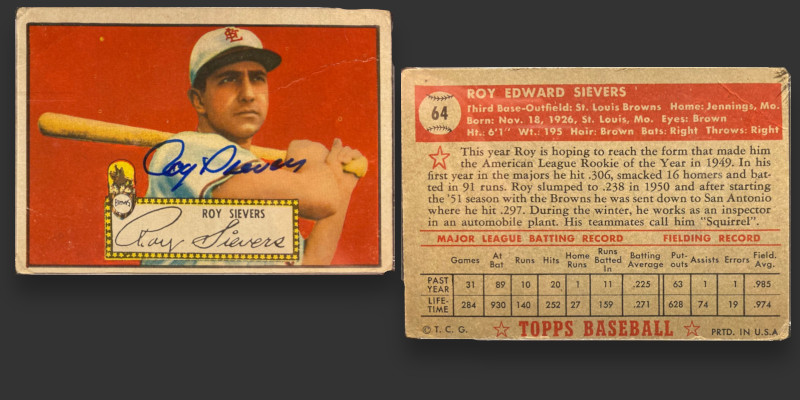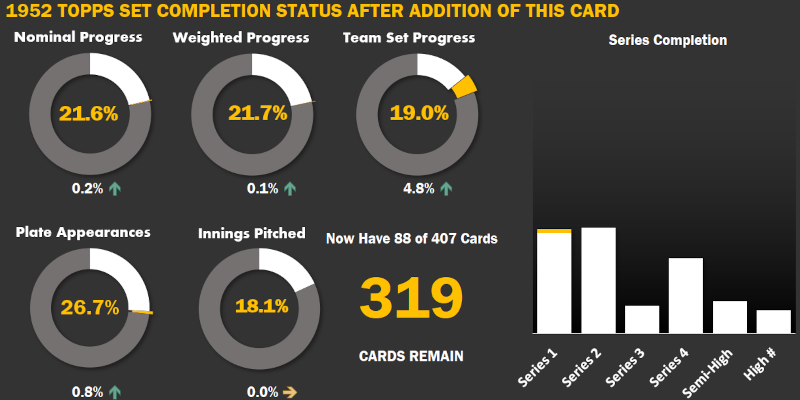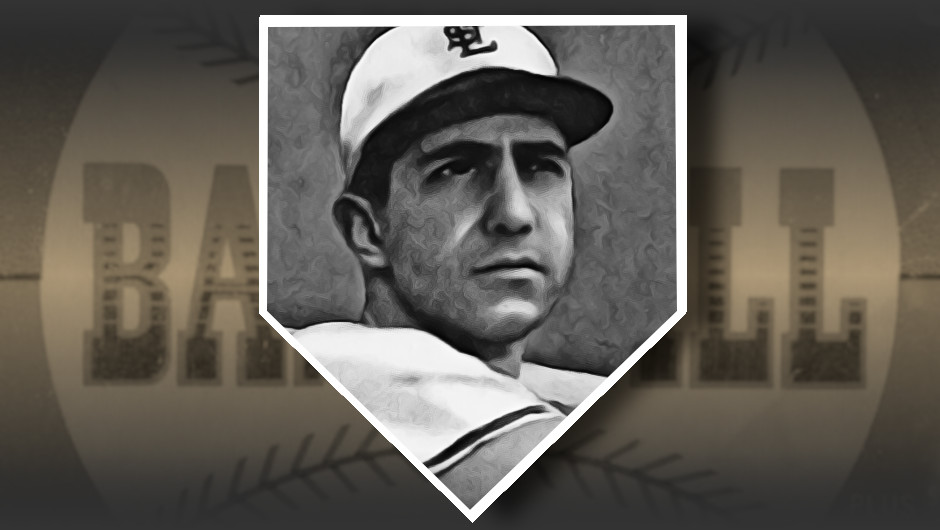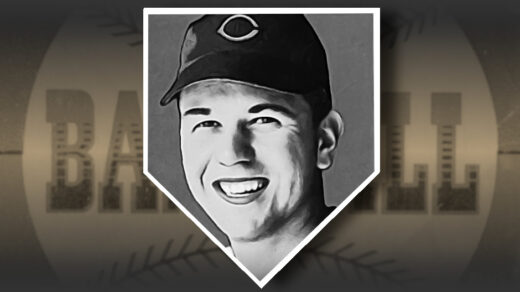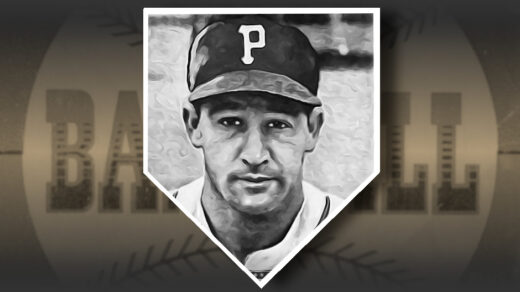St. Louis loves the Rally Squirrel. Cardinal fans fondly remember how an on-field appearance of a furry visitor spooked the Philadelphia Phillies and set off a St. Louis comeback in the 2011 National League Division Series. The Cardinals went on to win the World Series and the squirrel earned a spot in baseball lore and a place in Cardinal hearts.
It is fitting that late-inning heroics in the River City were ignited by a squirrel. The Browns, perennial undertstudies to the Cardinals, signed a local high schooler nicknamed “Squirrel” in 1945. He received a pair of baseball spikes as a signing bonus, but didn’t get to use them with the club until 1947 after being drafted into service as an Army MP. Sievers saw his first major league action in 1949 when he won the American League’s first-ever Rookie of the Year Award. The fact that the award is often abbreviated to the same letters as Sievers’ first name was not lost on sports writers.
Sievers established himself as a potent offensive force on otherwise lackluster teams. First for the Browns, then in stints with both incarnations of the Senators, Sievers provided badly needed run support. His reputation as the original rally squirrel comes from the timing of his 318 career homeruns, more than a quarter of which came in the 8th inning or later. In 1961 he entered a game as a replacement for the White Sox and ended up driving in 7 runs.
These performances made him a fan favorite, a feeling he reciprocated with a friendly demeanor and frequent autographs. His most famous fan was then-Vice President Richard Nixon, who attended games and often called upon him to discuss the state of Washington’s baseball team. Sievers baseball talent and popularity with Washington fans made him perfect to appear as Tab Hunter’s baseball double in the 1958 film Damn Yankees.
STATISTICS
Sievers is often compared to Dodgers favorite Gil Hodges with both being the only members of the 300-homerun club not enshrined in Cooperstown for many years*. Sievers went on a tear in the late 1950s, leading the league in homers several years and “nearly” missing out on the 1957 Triple Crown. Sievers joked that he would have accomplished the offensive feat if Ted Williams hadn’t beat his batting average by a “mere” 87 points that season.
*Hodges was added to the Hall of Fame in December 2021.
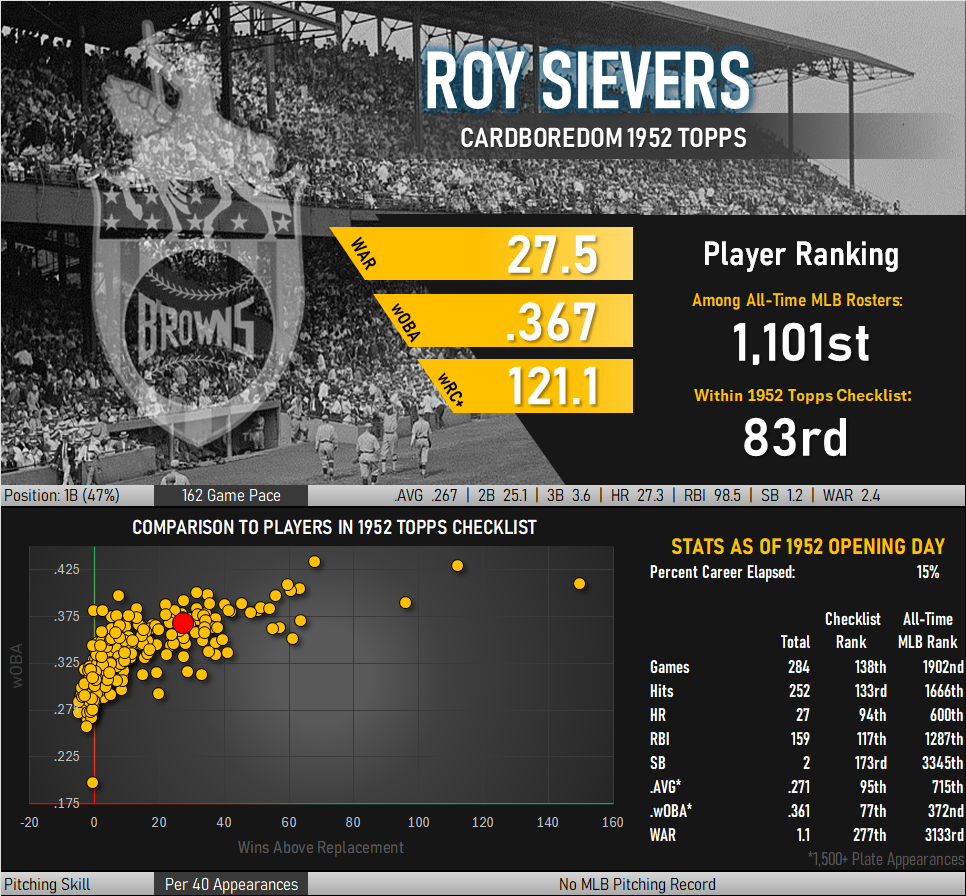
AFTER BASEBALL
Sievers retired after playing a dozen games for the Senators in 1965. He embarked on a short-lived coaching and managerial career in the various leagues, ultimately leaving after being considered “too nice” for the roles. He went on to put his friendliness to good use in the sales department of Yellow Freight. Sievers retired for good when he and the trucking company parted ways in 1986, going on to frequently indulge St. Louis-area fans until his death at age 90 in 2017.
FINDING A CARD

One of those fans was my uncle. Both had spent time in the Army and their paths crossed from time to time in St. Louis and Washington. I remember being amazed as a kid that my uncle knew a real baseball player and was even more surprised to learn they played golf on a few occaissions. With that in mind, I wanted a Sievers card to have a little something extra to it. I think I found what I was looking for when I came across the signed 1952 Topps card shown below.
